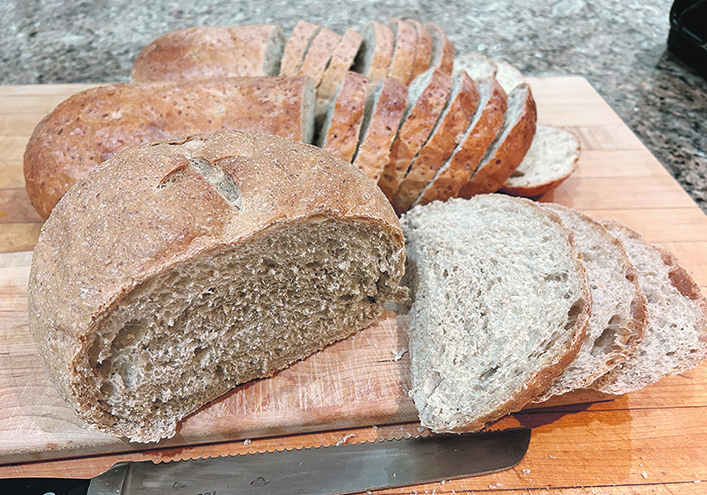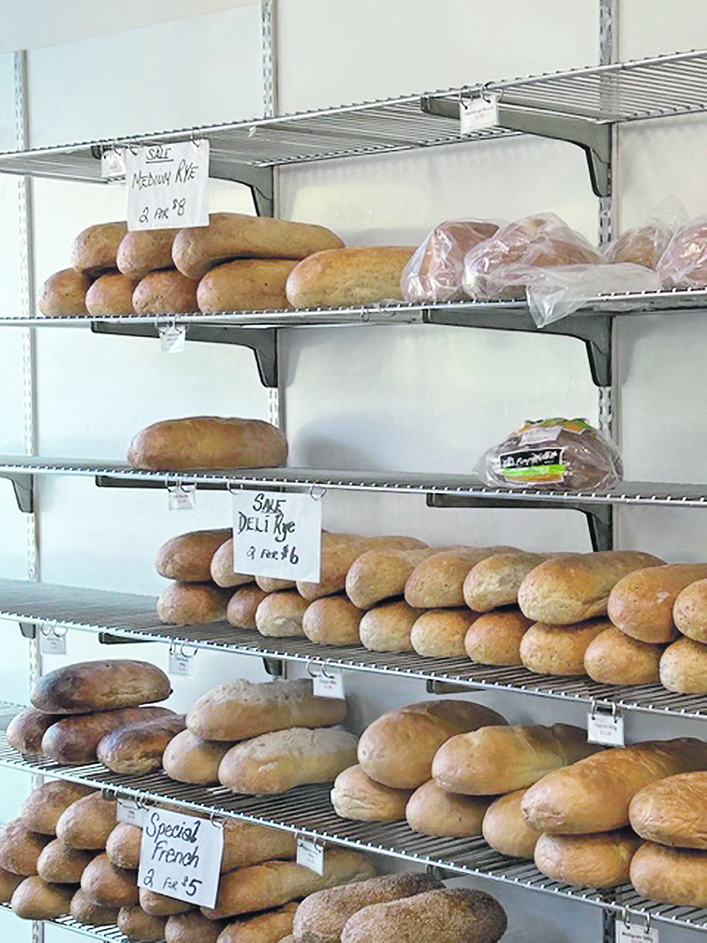‘Winnipeg rye’ still enjoys an international reputation as a new generation of bakers works to keep old traditions alive
This is part of an ongoing series of stories exploring rye, the crop, as it becomes Rye, the whisky.
The rich, spicy, humid smell of just-baked rye bread fills the busy shop front at Winnipeg’s City Bread on this lunch hour.
Other stories in this series:
- More producers start growing rye as crop prepares for a recovery
- Farmer finds new uses for old crop of rye
- Growing rye for seed is quirky but fun
- Rye’s agricultural journey set over thousands of years
- Hybrid varieties a game changer for rye sector
- Agriculture Canada plant breeder committed to rye
There’s a man in dusty, steel-toed work boots and a reflector jacket who is taking a few minutes of his short lunch break to pick up a few loaves.
There are a couple of kid-carrying mothers picking up this staple food of so many north-end families.
There’s a man in a suit, frowning as he waits in the line of shoppers.
And there’s Dorothy Gresham, who arrived just before the lunch rush and has already been ordering rye and other bread from the women working behind the glass counter.
“We’ve been coming here for a hundred years,” said Gresham, who lives “in the bush” 20 kilometres from Lac du Bonnet in eastern Manitoba.
She’s here today not just for herself but also for her neighbours, Barb and Ralph, who have just returned from summer in Ontario and are out of rye. She purchased four loaves for them, which will last only a few days. Before heading to Ontario, they stocked up big time.
“They take tons of this with them,” said Gresham.

Rye bread is a big deal in Winnipeg, and Winnipeg is a big deal in the North American rye bread community. Across the continent, Jews, Ukrainians and others from rye-eating ethnicities and eastern European backgrounds know of — and often order — Winnipeg’s unique “light” version of the hearty and pungent bread.
(For a deeper dive into the uniqueness of Winnipeg rye bread and its connection to North America’s Jewish community, see John Long Hurst’s article, “A journalist in Winnipeg investigates how that city’s rye bread became the best in North America,” in The Canadian Jewish News.)
The Winnipeg version is less hearty and pungent, containing only a minority portion of rye, which is part of its appeal, considering that the heaviness and pungency of fully rye bread is too overpowering for some bread eaters. It’s certainly not pumpernickel, although most bakeries like this one also sell heavier ryes.
At one time rye bread was a staple for almost all Canadians, back in the days when there weren’t a lot of other crops, and wheat varieties struggled more with quality and survival in Canada’s climate.
Recent decades have seen it progressively lose its share of the bread shelf in grocery stores, while retaining fierce loyalty from a narrowing pool of dedicated rye eaters.
In Europe it’s a different matter. In central and eastern Europe, rye is just a regular form of bread, as normal as sliced white bread in North America.
Germany, Poland, Russia, Belarus, Ukraine and the Scandinavian nations form a “rye belt” both for consumption and crop production.
There, livestock feed forms a secondary tier of rye crop demand, while in North America feed is the main and most expected use. Rye for milling is a relatively minor use for the crop in Canada, confronting bakers with conundrums.
“If we could get more different varieties of the bread types (of rye grain), it would be easier to execute,” said Ukraine raised-and -trained baker Maria Syroezhko, who operates Forgotten Flavours, which is based in Niverville, Man., but sells much of its production in Winnipeg.
“We would love to work with farmers and have different kinds of rye flour.”
In Europe, it’s easy to get both rye flour and specific rye yeasts, but on this side of the Atlantic, flour and rye yeasts are hard to find and vary greatly in quality, Syroezhko said.
Even in the heartland of Winnipeg rye, the bread has been sliding. The famous KUB (Kuicher’s Ukrainian Bread) bakery closed in late 2022, just a few months shy of its 100th birthday, although some local foodie entrepreneurs hope to revive the brand and bread.
However, the artisanal bakers have found demand for their products.
Forgotten Flavours has discovered the right kind of rye bread customers, who “if they like it, they love it.”
“Light rye” is a popular item at the trendy Tall Grass Prairie Bakery in the Wolseley neighbourhood, which its bakers make differently than other typical “Winnipeg” ryes.
Syroezhko and her partner, Chris Holbrow, don’t make a lot of rye bread yet, but they hope to. The challenges obtaining consistent flours and various rye yeasts frustrate a baking perfectionist like Syroezhko.

Rye is already a tough bread to make because of its acidity levels, low gluten and other technical challenges, so inconsistency in the dough isn’t a welcome complication.
Fortunately, that might give them an edge in the artisanal market of the future, Holbrow said.
“She truly understands the chemistry behind it,” he said of Syroezhko.
“People, other bakers, will go down the line of least resistance. If this requires so much time and attention, who in their right mind — other than some sadists like ourselves — are going to devote that much attention to it?”
Rye can still be found on grocery store shelves, but it isn’t the mainstay it once was. For farmers, the milling market is probably the last one that means anything for the price they get or for the specifications they have to meet for their grain.
But passion for rye bread hasn’t died for the lunchtime shoppers at City Bread in Winnipeg or those who stop by Syroezhko and Holbrow’s stand at shows and farmers markets. It might not be the store shelf giant it once was, but who says it can never make a comeback as long as some people know how to make it and have the commitment to provide it?


















